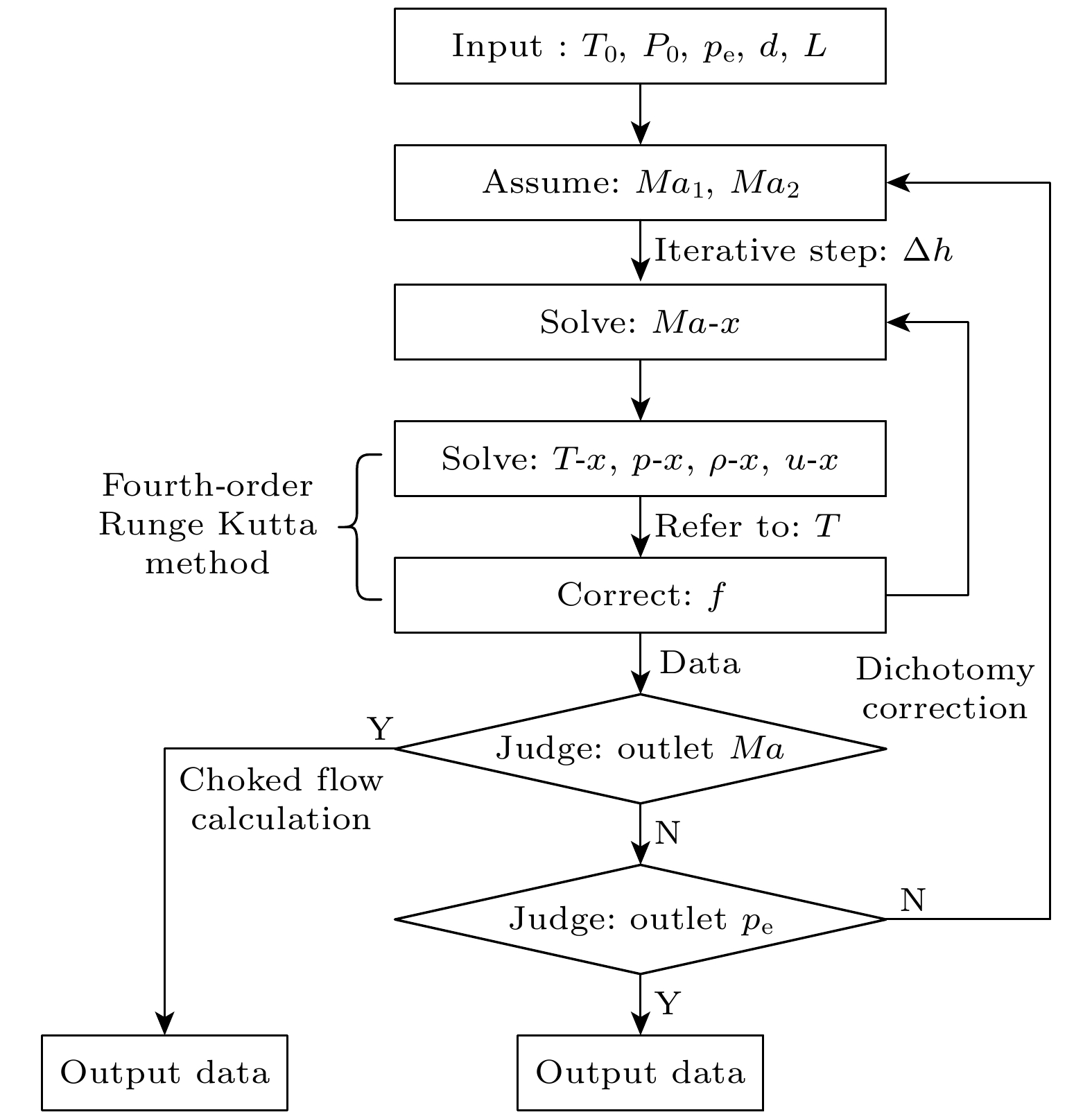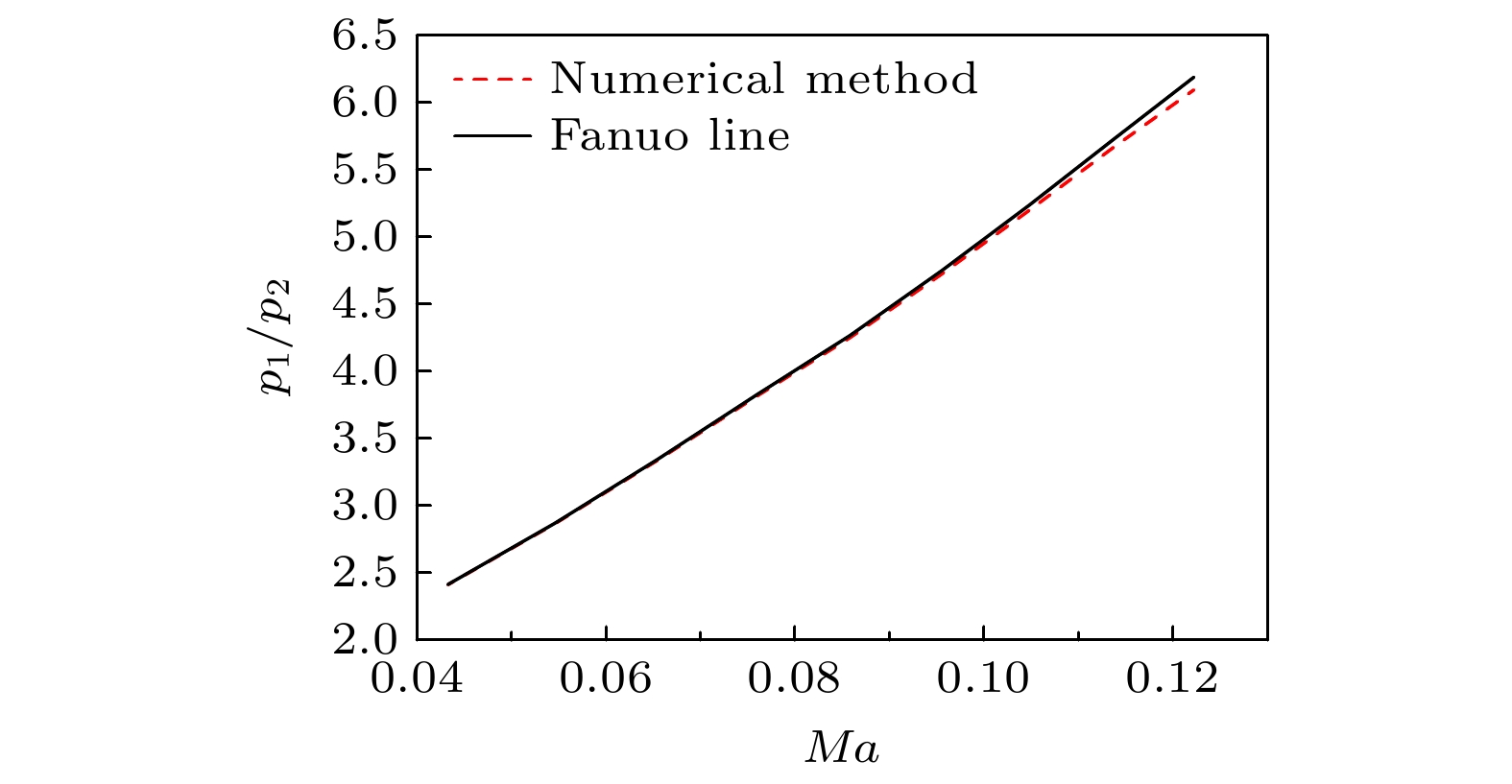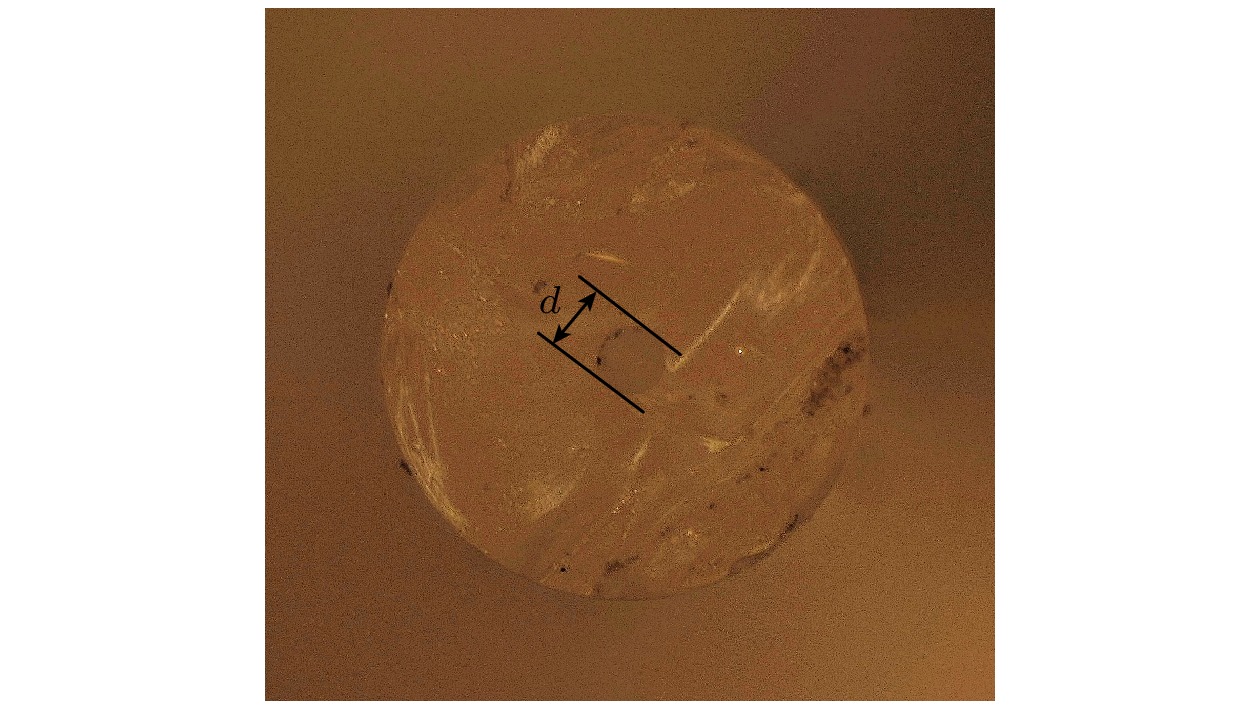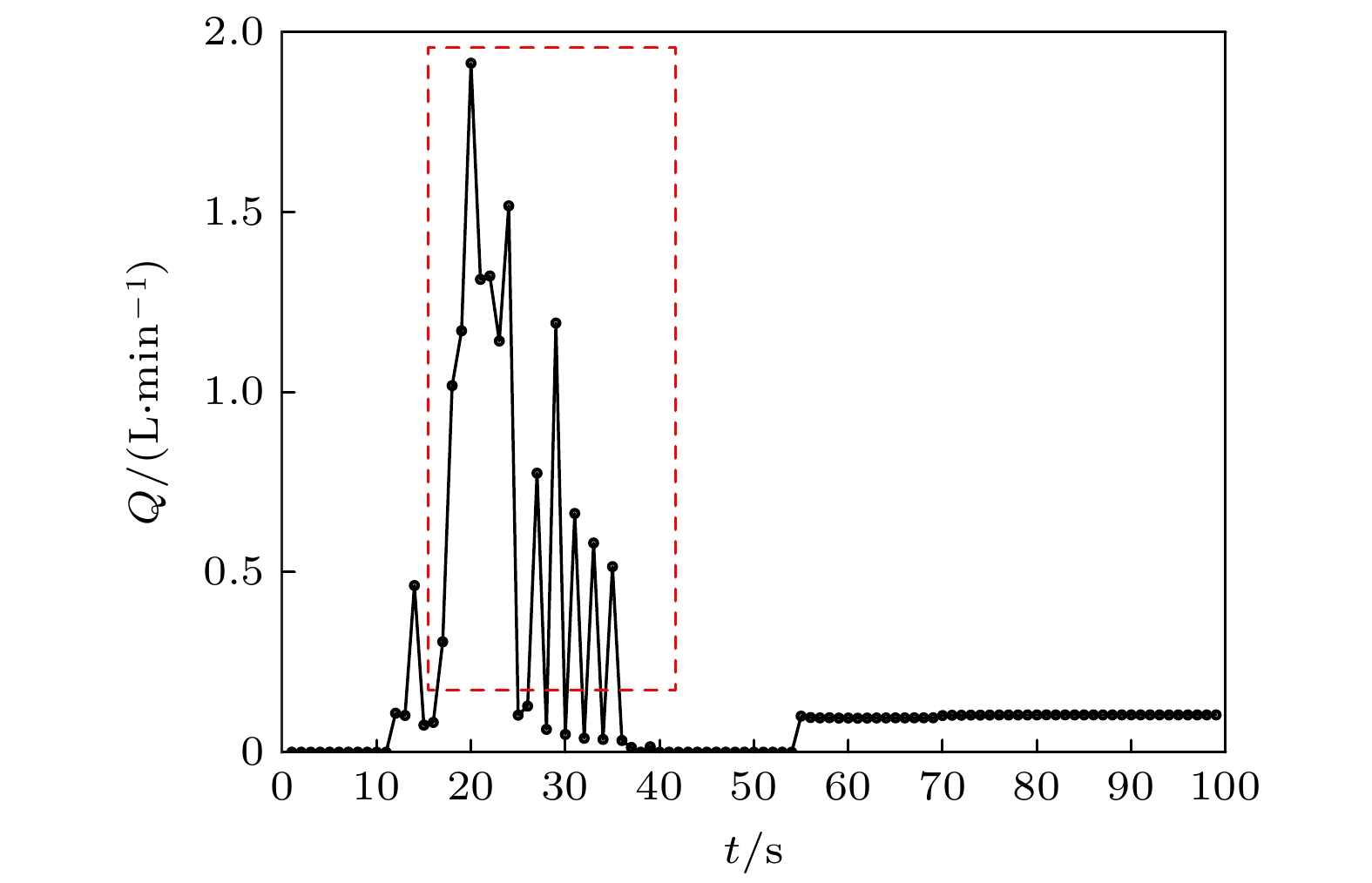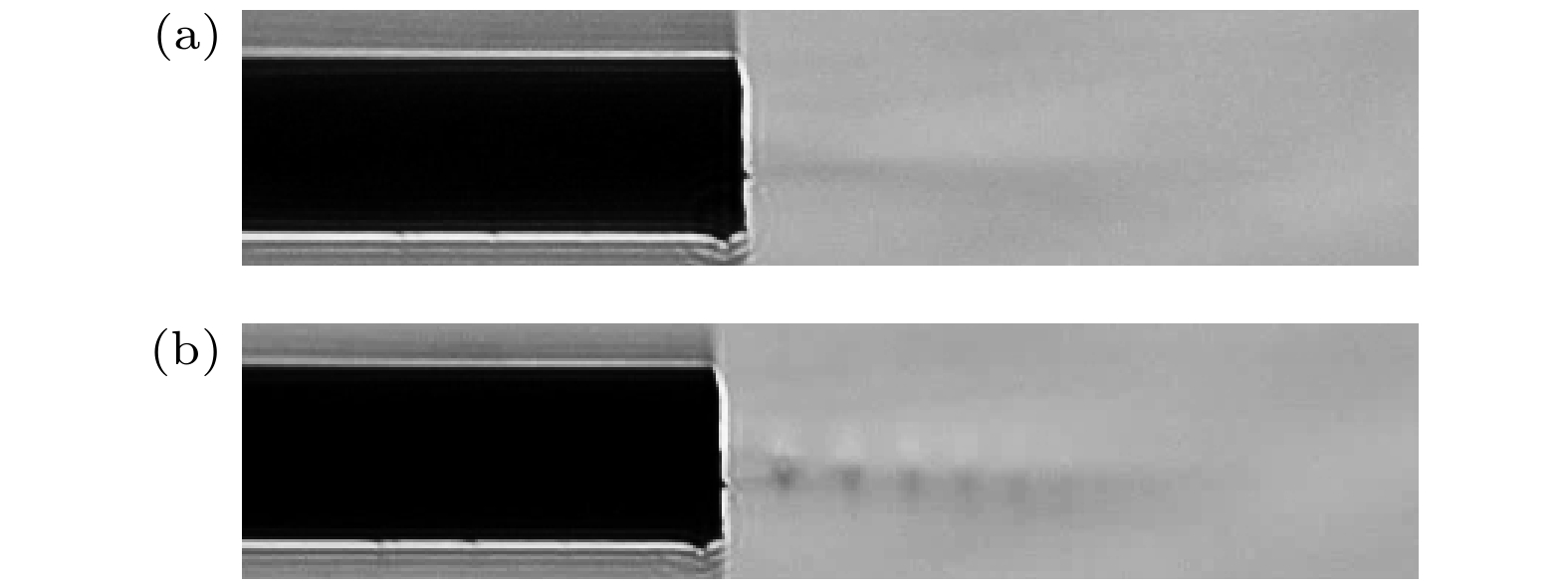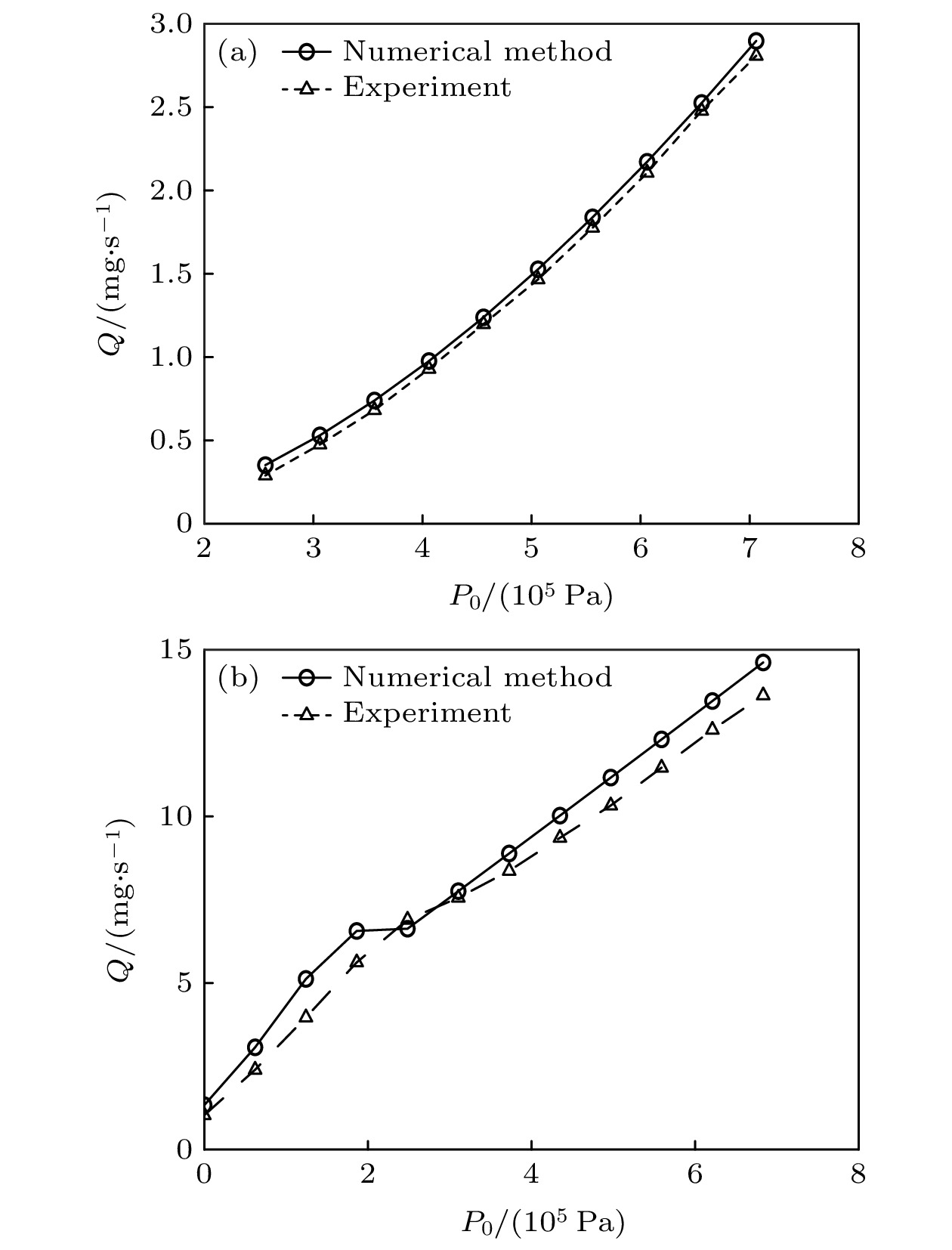-
The fundamental issues related to heat and mass transfer in microchannels have significant research needs in various engineering fields, such as new materials, microelectronics, and aerospace. This paper addresses the problem of predicting mass transport characteristics within microtubes by developing numerical methods, conducting experimental measurements for validation, and analyzing prediction errors. A one-dimensional approximation method is employed to simplify the compressible flow equations, and a fourth-order Runge-Kutta numerical method is also used to iteratively solve the governing equations. A theoretical calculation method suitable for predicting mass transport characteristics in microtubes is established. This method can calculate various flow parameters along the length of the microtube and can handle different flow conditions, such as static pressure matching or flow choking at the outlet. Subsequently, by comparing the numerical calculation results with the theoretical results of the Fanuo line parameter ratio, the correctness of the numerical calculation method is verified. Also, Schlieren experiments and a self-designed mass flow measurement device are used to qualitatively and quantitatively verify the effectiveness of physical computing models. Under typical driving pressure differences, the qualitative agreement between the calculated and schlieren results for the outlet conditions of the microtube demonstrate the rationality of the numerical method in terms of static pressure matching and flow choking calculations. Regarding mass flow prediction, comparisons between theoretical calculations and experimental measurements under different driving pressures reveal that when the flow inside the microtube is in a fully laminar state, the mass flow prediction error is within 3%. When the flow is fully turbulent, the prediction error is within 8%. However, when the flow involves a transition from laminar to turbulent, the prediction error increases to 29%. During the numerical calculations, based on existing research results, the formula for transition Reynolds number and the turbulent friction factor are set as input parameters. However, the analyses of the Reynolds numbers along the length of the microtube and the average friction factors under different conditions show that the actual transition Reynolds number in the microtube is lower than the value set in the numerical calculations. Additionally, there is a significant discrepancy between the calculated turbulent friction factor and the actual value. Moreover, during the transition from laminar to turbulent flow, the friction factor should increase continuously with the Reynolds number increasing, but the in the numerical calculations the turbulent friction factor is directly used to represent this process. These factors are the main reasons for the larger mass flow prediction errors when the flow involves transition and turbulence. -
Keywords:
- one-dimensional processing method /
- mass transfer /
- numerical prediction /
- friction coefficient
[1] van den Berg H R, ten Seldam C A, van den Gulik P S 1993 J. Fluid. Mech. 246 1
 Google Scholar
Google Scholar
[2] Lorenzini M, Morini G L, Salvigni S 2010 Int. J. Therm. 49 248
 Google Scholar
Google Scholar
[3] Fang X, Yue X A, An W Q, Feng X G 2019 Microfluid. Nanofluidics. 23 5
 Google Scholar
Google Scholar
[4] Reynolds O 1883 Philos. Trans. 174 935
 Google Scholar
Google Scholar
[5] Kawashima D, Yamada T, Hong C, Asako Y 2016 J. Mech. Eng. 230 420
 Google Scholar
Google Scholar
[6] American National Standard Institute. ANSI N14.5 2022 Radioactive Materials Leakage Teats on Packages for Shipment
[7] Anderson B L, Carlson R W, Fischer L E 1994 Predicting the Pressure Driven Flow of Gases through Micro-capillaries and Micro-orifices (Washington, DC: Nuclear Regulatory Commission
[8] Chen C S, Kuo W J 2004 Numer. Heat. Transfer. 45 85
 Google Scholar
Google Scholar
[9] Asako Y, Nakayama K, Shinozuka T 2005 Int. J. Heat. Mass. Transfer. 48 4985
 Google Scholar
Google Scholar
[10] Asako Y, Pi T, Turner S E, Faghri M 2003 Int. J. Heat. Mass. Transfer. 46 3041
 Google Scholar
Google Scholar
[11] Murakami S, Toyoda K, Asako Y 2021 J. Fluids. Eng. 134 111301
 Google Scholar
Google Scholar
[12] Hong C, Asako Y, Suzuki K, Faghri M 2012 Numer. Heat. Transfer. 61 163
 Google Scholar
Google Scholar
[13] Hong C, Tanaka G, Asako Y, Katanoda H 2018 Int. J. Heat. Mass. Transfer. 121 187
 Google Scholar
Google Scholar
[14] Lijo V, Kim H D, Setoguchi T 2012 Int. J. Heat. Mass. Transfer. 55 701
 Google Scholar
Google Scholar
[15] Wang H, Xing J, Sun Z, Gu H, Sun X, Wang Y 2023 AEST 57 74
 Google Scholar
Google Scholar
[16] Agrawal A, Kushwaha H M, Jadhav R S 2020 Microscale Flow and Heat Transfer (New York: Springer
[17] Shome B 2023 Phys. Fluids 35 122004
 Google Scholar
Google Scholar
[18] Yovanovich M M, Khan W A 2020 J. Thermophys. Heat. Trans. 34 792
 Google Scholar
Google Scholar
[19] Valougeorgis D 2007 Phys. Fluids 19 091702
 Google Scholar
Google Scholar
[20] Barber R W, Emerson D R 2006 HTE 27 3
 Google Scholar
Google Scholar
[21] Bykov N Y, Zakharov V V 2022 Phys. Fluids. 34 057106
 Google Scholar
Google Scholar
[22] Wang X D, Li Y, Gao Y, Gao C G, Fu W C 2023 Aerospace 10 126
 Google Scholar
Google Scholar
[23] Xu K, Huang J C 2010 J. Comput. Phys. 229 7747
 Google Scholar
Google Scholar
[24] Guo Z L, Xu K, Wang R J 2013 Phys. Rev. E 88 033305
 Google Scholar
Google Scholar
[25] Hong C, Yamada T, Asako Y, Faghri M 2012 Int. J. Heat. Mass. Transfer. 55 4397
 Google Scholar
Google Scholar
[26] Celata G P, Lorenzini M, Morini G L, Zummo G 2009 Int. J. Heat. Fluid. Flow. 30 814
 Google Scholar
Google Scholar
[27] Rehman D, Barattini D, Hong C, Morini G L 2021 Exp. Fluids 62 52
 Google Scholar
Google Scholar
[28] Rehman D, Morini G L, Hong C 2019 Micromachines 10 171
 Google Scholar
Google Scholar
[29] Hong C, Asako Y, Morini G L, Faghri M 2024 Exp. Therm. Fluid. Sci. 155 111196
 Google Scholar
Google Scholar
[30] Brackbill T, Kandlikar S 2007 Proceedings of the International Conference on Nanochannels, Microchannels and Minichannels Puebla, Mexico, June 18−20, 2007 p509
[31] Eckhardt B, Schneider T M, Hof B, Westerweel J 2007 Annu. Rev. Fluid. Mech. 39 468
 Google Scholar
Google Scholar
[32] Morini G L, Lorenzini M, Salvigni S 2006 Exp. Therm. Fluid. Sci. 30 733
 Google Scholar
Google Scholar
[33] Du D, Li Z, Guo Z 2000 Sci. China. Technol. Sci. 43 171
 Google Scholar
Google Scholar
[34] Sonnad J R, Goudar C T 2006 J. Hydraul. Eng 132 863
 Google Scholar
Google Scholar
[35] 左克罗, 霍夫曼 著 (王汝涌 译) 气体动力学(上册) (北京: 国防工业出版社)
Zucrow M J, Hoffman J D (translated by Wang R Y) 1984 Gas Dynamics (Vol. 1) (Beijing: National Defense Industry Press
[36] Tang G H, Li Z, He Y L, Tao W Q 2007 Int. J. Heat. Mass. Transfer. 50 2282
 Google Scholar
Google Scholar
[37] Moody L F 1944 T. ASME 66 671
 Google Scholar
Google Scholar
[38] Avci A, Karagoz I 2019 Eur. J. Mech. B. Fluids 78 182
 Google Scholar
Google Scholar
-
表 1 工况条件
Table 1. Operating conditions.
Case P0/kPa T0/K pe/kPa d/μm L/mm 1 256 298 106 200 120 2 706 298 106 200 120 表 2 计算与实验条件
Table 2. Calculation and experimental conditions.
Series P0 /kPa T0 /K pe /kPa d/μm L/mm 1 256—706 298 106 100 120 2 156—706 298 106 200 120 -
[1] van den Berg H R, ten Seldam C A, van den Gulik P S 1993 J. Fluid. Mech. 246 1
 Google Scholar
Google Scholar
[2] Lorenzini M, Morini G L, Salvigni S 2010 Int. J. Therm. 49 248
 Google Scholar
Google Scholar
[3] Fang X, Yue X A, An W Q, Feng X G 2019 Microfluid. Nanofluidics. 23 5
 Google Scholar
Google Scholar
[4] Reynolds O 1883 Philos. Trans. 174 935
 Google Scholar
Google Scholar
[5] Kawashima D, Yamada T, Hong C, Asako Y 2016 J. Mech. Eng. 230 420
 Google Scholar
Google Scholar
[6] American National Standard Institute. ANSI N14.5 2022 Radioactive Materials Leakage Teats on Packages for Shipment
[7] Anderson B L, Carlson R W, Fischer L E 1994 Predicting the Pressure Driven Flow of Gases through Micro-capillaries and Micro-orifices (Washington, DC: Nuclear Regulatory Commission
[8] Chen C S, Kuo W J 2004 Numer. Heat. Transfer. 45 85
 Google Scholar
Google Scholar
[9] Asako Y, Nakayama K, Shinozuka T 2005 Int. J. Heat. Mass. Transfer. 48 4985
 Google Scholar
Google Scholar
[10] Asako Y, Pi T, Turner S E, Faghri M 2003 Int. J. Heat. Mass. Transfer. 46 3041
 Google Scholar
Google Scholar
[11] Murakami S, Toyoda K, Asako Y 2021 J. Fluids. Eng. 134 111301
 Google Scholar
Google Scholar
[12] Hong C, Asako Y, Suzuki K, Faghri M 2012 Numer. Heat. Transfer. 61 163
 Google Scholar
Google Scholar
[13] Hong C, Tanaka G, Asako Y, Katanoda H 2018 Int. J. Heat. Mass. Transfer. 121 187
 Google Scholar
Google Scholar
[14] Lijo V, Kim H D, Setoguchi T 2012 Int. J. Heat. Mass. Transfer. 55 701
 Google Scholar
Google Scholar
[15] Wang H, Xing J, Sun Z, Gu H, Sun X, Wang Y 2023 AEST 57 74
 Google Scholar
Google Scholar
[16] Agrawal A, Kushwaha H M, Jadhav R S 2020 Microscale Flow and Heat Transfer (New York: Springer
[17] Shome B 2023 Phys. Fluids 35 122004
 Google Scholar
Google Scholar
[18] Yovanovich M M, Khan W A 2020 J. Thermophys. Heat. Trans. 34 792
 Google Scholar
Google Scholar
[19] Valougeorgis D 2007 Phys. Fluids 19 091702
 Google Scholar
Google Scholar
[20] Barber R W, Emerson D R 2006 HTE 27 3
 Google Scholar
Google Scholar
[21] Bykov N Y, Zakharov V V 2022 Phys. Fluids. 34 057106
 Google Scholar
Google Scholar
[22] Wang X D, Li Y, Gao Y, Gao C G, Fu W C 2023 Aerospace 10 126
 Google Scholar
Google Scholar
[23] Xu K, Huang J C 2010 J. Comput. Phys. 229 7747
 Google Scholar
Google Scholar
[24] Guo Z L, Xu K, Wang R J 2013 Phys. Rev. E 88 033305
 Google Scholar
Google Scholar
[25] Hong C, Yamada T, Asako Y, Faghri M 2012 Int. J. Heat. Mass. Transfer. 55 4397
 Google Scholar
Google Scholar
[26] Celata G P, Lorenzini M, Morini G L, Zummo G 2009 Int. J. Heat. Fluid. Flow. 30 814
 Google Scholar
Google Scholar
[27] Rehman D, Barattini D, Hong C, Morini G L 2021 Exp. Fluids 62 52
 Google Scholar
Google Scholar
[28] Rehman D, Morini G L, Hong C 2019 Micromachines 10 171
 Google Scholar
Google Scholar
[29] Hong C, Asako Y, Morini G L, Faghri M 2024 Exp. Therm. Fluid. Sci. 155 111196
 Google Scholar
Google Scholar
[30] Brackbill T, Kandlikar S 2007 Proceedings of the International Conference on Nanochannels, Microchannels and Minichannels Puebla, Mexico, June 18−20, 2007 p509
[31] Eckhardt B, Schneider T M, Hof B, Westerweel J 2007 Annu. Rev. Fluid. Mech. 39 468
 Google Scholar
Google Scholar
[32] Morini G L, Lorenzini M, Salvigni S 2006 Exp. Therm. Fluid. Sci. 30 733
 Google Scholar
Google Scholar
[33] Du D, Li Z, Guo Z 2000 Sci. China. Technol. Sci. 43 171
 Google Scholar
Google Scholar
[34] Sonnad J R, Goudar C T 2006 J. Hydraul. Eng 132 863
 Google Scholar
Google Scholar
[35] 左克罗, 霍夫曼 著 (王汝涌 译) 气体动力学(上册) (北京: 国防工业出版社)
Zucrow M J, Hoffman J D (translated by Wang R Y) 1984 Gas Dynamics (Vol. 1) (Beijing: National Defense Industry Press
[36] Tang G H, Li Z, He Y L, Tao W Q 2007 Int. J. Heat. Mass. Transfer. 50 2282
 Google Scholar
Google Scholar
[37] Moody L F 1944 T. ASME 66 671
 Google Scholar
Google Scholar
[38] Avci A, Karagoz I 2019 Eur. J. Mech. B. Fluids 78 182
 Google Scholar
Google Scholar
Catalog
Metrics
- Abstract views: 2245
- PDF Downloads: 49
- Cited By: 0














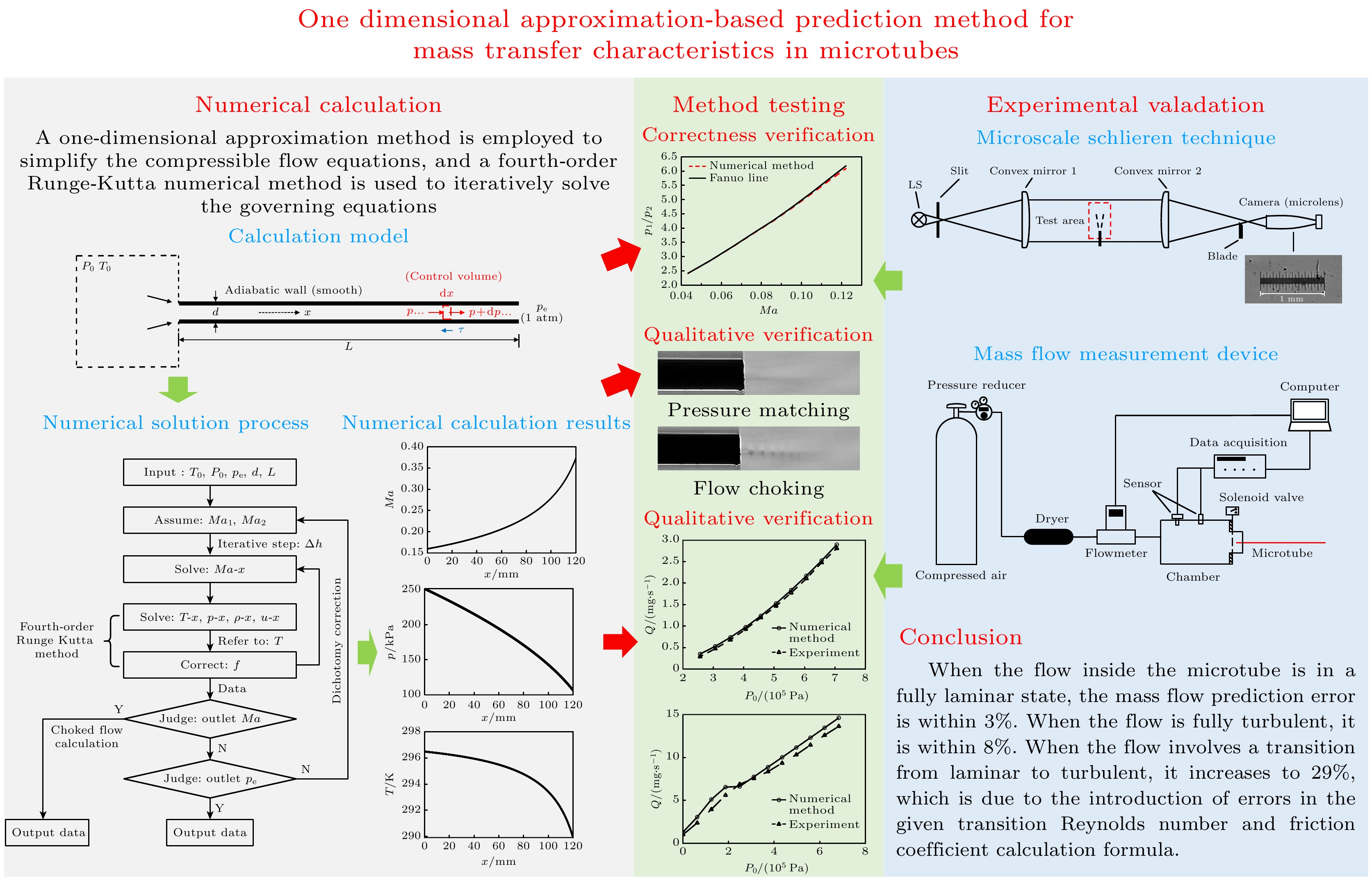

 DownLoad:
DownLoad:
